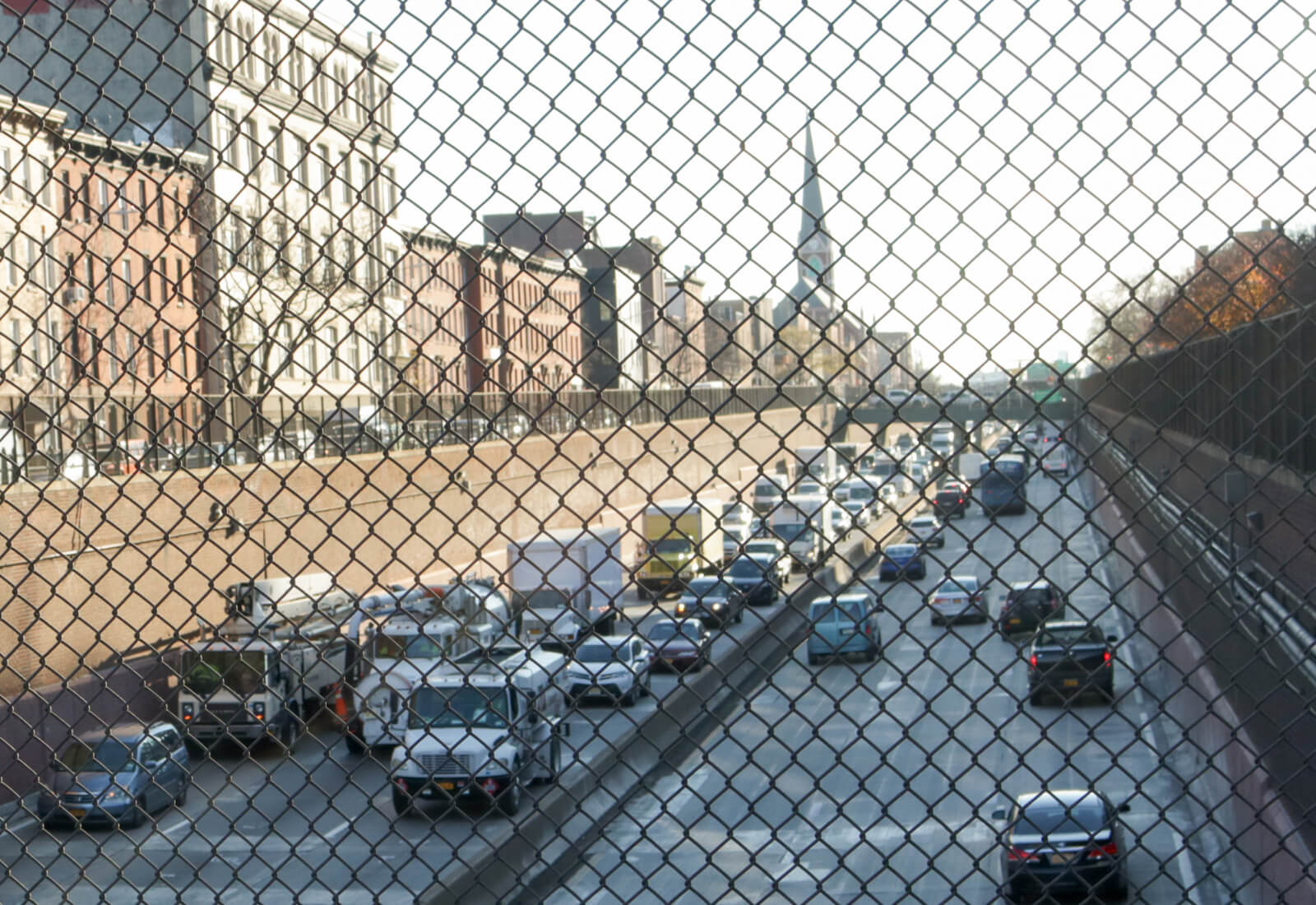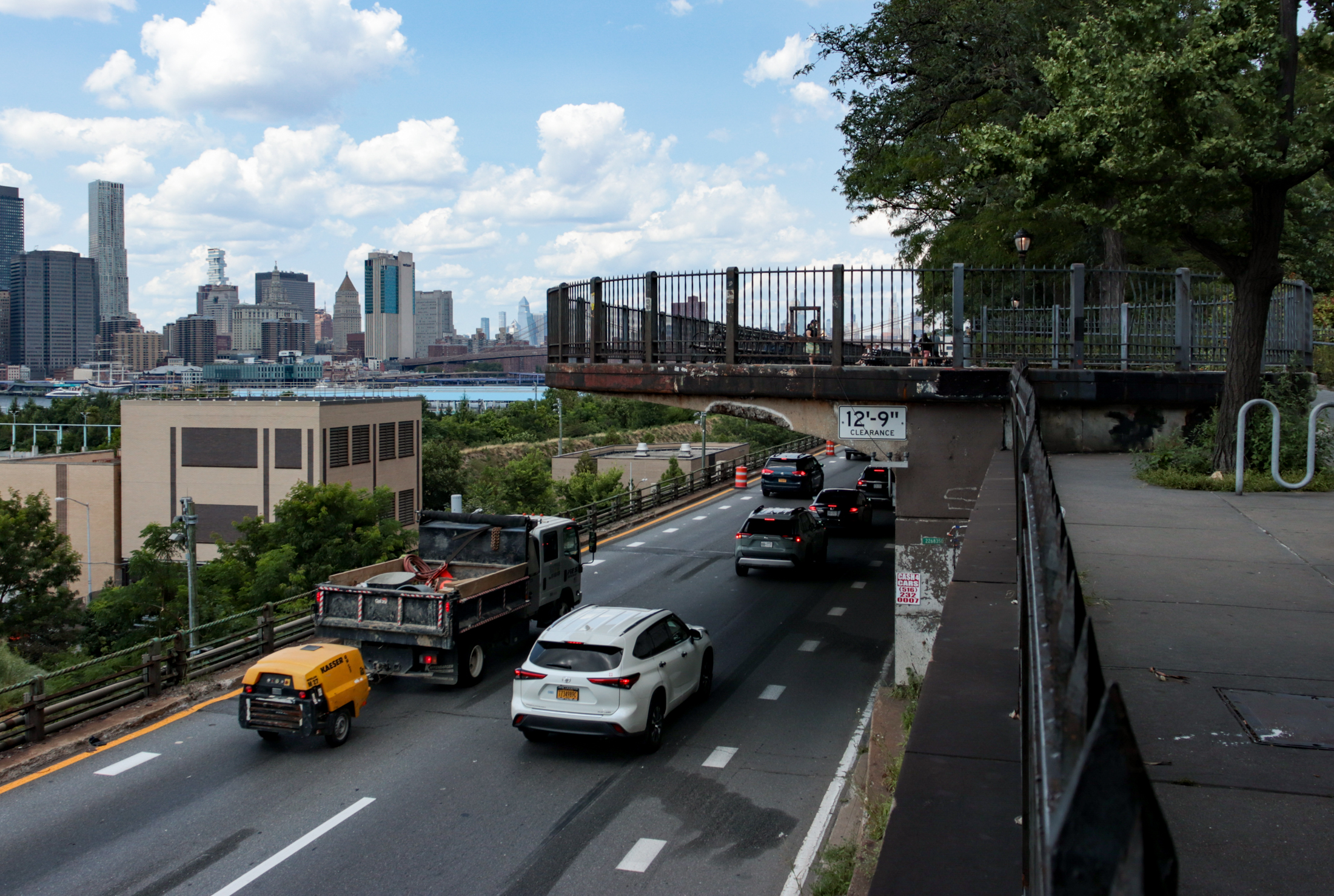Taking Up Locals' Pleas, DOT Mulls Capping BQE to Connect Communities
The plan would draw on federal funds specifically earmarked for uniting communities divided by highways in the 20th century.

The trench in Cobble Hill seen from Hicks Street in 2016. Photo by Susan De Vries
By Ben Brachfeld, amNY
City officials on Wednesday for the first time raised the possibility of capping portions of the Brooklyn-Queens Expressway using federal dollars meant to bridge communities divided by urban highways.
The proposal is in its very earliest stages but could ultimately see parts of the BQE situated in open-cut trenches, like in south Williamsburg, covered up by greenery. Department of Transportation officials said they are studying a cap specifically covering a four-block trench between Borinquen Place and Division Avenue.
“In the long term, a cap could connect with parks and playgrounds, create new public space, and support mitigation of noise and vehicle emissions from the highway in this neighborhood,” said Julie Bero, DOT’s chief strategy officer, in a call with reporters on Wednesday.

The project’s studies are funded with a $5.6 million federal grant through the Reconnecting Communities program. This program aims to reunite neighborhoods separated by the construction of urban highways in the 20th century, as occurred in communities along the BQE corridor. Officials presented no timeline for when the capping might begin.
Other areas of the highway that could see capping are over trenches in Cobble Hill or Bay Ridge, said Bero. The city is also studying capping parts of the Cross Bronx Expressway, which, like the BQE, was constructed by master builder Robert Moses in the mid-20th century and displaced thousands of residents. DOT is set to unveil capping “concepts” at a series of workshops later this month.
Officials also discussed other proposals for beautifying the corridor and making more use of the space under the highway’s elevated portions, such as areas for bike parking and e-bike charging or vendors and markets.

The news comes as the city is in the midst of “reimagining” the infamous crumbling triple cantilever section of the BQE in Brooklyn Heights, which for years has been considered at risk of collapse. Some proposals call for covering up the unsightly highway with green space to reconnect Brooklyn Heights with the East River waterfront. Earlier this year, the city’s federal grant applications for rebuilding and expanding the existing cantilever were rejected, pushing major work back to the tail end of the 2020s.
Any work north or south of the city-owned central section, which includes the cantilever, requires collaboration with the state DOT, which owns the rest of the highway.
In April, an environmental coalition rallied in Red Hook to demand any overhaul of the roadway be community led, with a focus on reducing pollution and uniting communities.
“The City and State are partnering on a conceptual planning study to evaluate and develop potential options for the north and south portions of the BQE, with the final outcome bringing potential options forward to conceptual design,” said state DOT spokesperson Joseph Morrissey. “We appreciate the collaboration and ideas that this study has generated, but it is too early in the process to define which conceptual proposals will move forward for further study and evaluation.”
Editor’s note: A version of this story originally ran in amNY. Click here to see the original story.
Related Stories
- Sweeping Overhaul of Crumbling BQE Likely Delayed Until 2028
- Newly Formed Environmental Coalition Demands Community-Led BQE Overhaul
- Feds Say No to DOT Request for Money to Rebuild Long-Crumbling BQE
Email tips@brownstoner.com with further comments, questions or tips. Follow Brownstoner on X and Instagram, and like us on Facebook.









Repairing the cantilever is such a failure at the state and local level. Step one of any fix is to prepare the ground level road for BQE traffic, but they can’t even start on it. At some point, the road will fail and people will get hurt.
As to the other aspect of the article, the city should be first in line to claim grants to cover the BQE in Williamsburg and Carroll Gardens. If there’s a downside to those projects, I don’t see them.